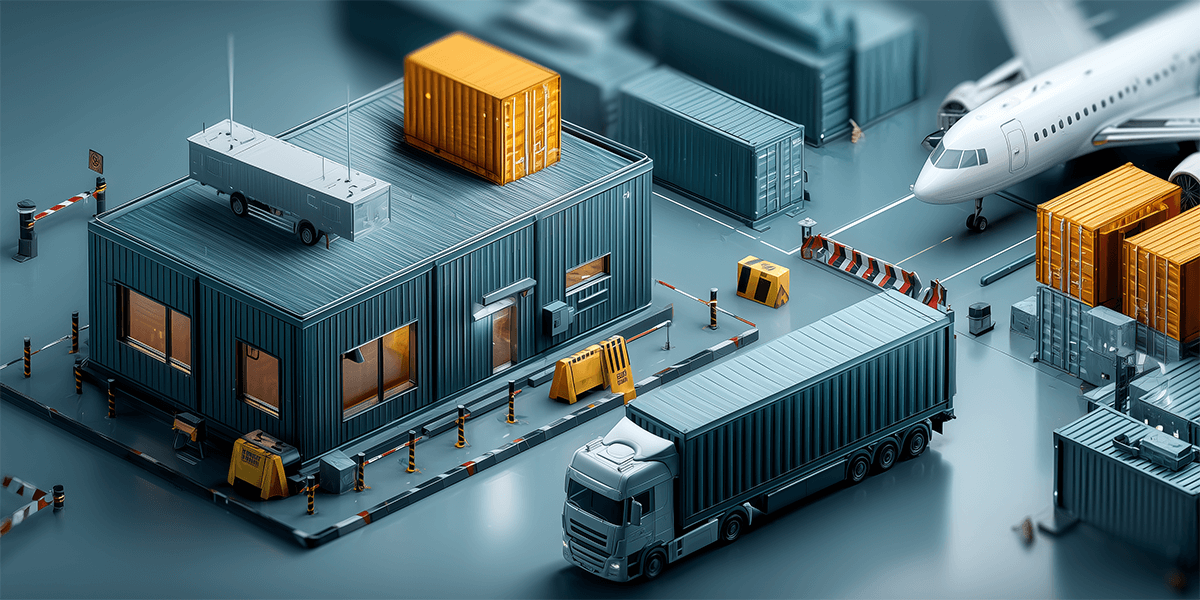
You ordered a product from abroad or as a company you are engaged in import or export. At this point, one of the concepts you encounter is “customs clearance”. So, what is customs clearance and how does this process work? For those hearing about it for the first time, it may be confusing, but the basic logic is quite understandable.
What Is Customs Clearance?
So, what is the main topic, customs clearance? Customs clearance refers to the necessary legal procedures performed when a good enters or exits a country. These procedures include; preparing a declaration, paying taxes and duties, documenting the products, and if necessary, subjecting them to inspection. For a product to enter free circulation, customs clearance procedures must be completed without any deficiencies. Otherwise, your product may get stuck at customs or be returned.
What Is the Purpose of Customs Clearance?
The customs clearance process ensures that products traded between countries cross borders under control, are organized, and recorded. This process secures the economic safety of countries while also helping to maintain orderly trade. If customs procedures are not carried out, neither the importing country nor the trade goods will benefit from the imported products and trade items entering the country.
What Are Customs Procedures, and What Stages Do They Include?
The question “What are customs procedures?” is frequently asked, especially by those doing import or export for the first time. In fact, these procedures are a process and generally include the following steps: First, the customs declaration of the cargo is prepared. Then, the necessary documents are collected and submitted to the customs administration. The third stage involves determining the customs tariff schedule and calculating taxes. Finally, the cargo is released from customs, and the process is completed.
Declaration Preparation:
A formal document created electronically with information such as the type, value, and origin of the goods.
Taxes and Duties:
Calculations are made based on the customs value of the product, including VAT, Special Consumption Tax (ÖTV), or customs duty.
Customs Inspection (If Any):
Some products may be subject to physical inspection. Especially agricultural, pharmaceutical, or textile products are scrutinized closely.
Approval and Release:
After all procedures are completed, the goods are released and reach you.
How Can the Customs Clearance Process Be Made Easier?
Honestly, customs clearance can sometimes seem complicated. However, working with an experienced customs broker or logistics company makes this process much easier. They prepare the documents on your behalf, carry out the procedures, and handle all follow-up. You can also easily monitor the process remotely. This way, instead of dealing with complex details related to customs clearance, you can focus on your business. Especially for trading companies, this support provides a significant advantage in terms of time and cost. Progressing with the right expertise and experience to make the customs clearance process more efficient increases the competitiveness of companies and simplifies workflow.
What Are the Documents Used in Customs Clearance?
Customs clearance is not just a process completed with a product declaration. Providing the correct and complete documents is one of the most critical steps. So, what are these documents? Here are the most commonly used documents during customs procedures:
1. Commercial Invoice
Prepared by the seller of the product. It includes details such as the product name, quantity, unit price, total value, and buyer and seller information. It is used as the basis for calculating customs duties.
2. Packing List
Details of the shipped products. Information such as which product is in which package and how many units are listed here. This list is used during physical inspection at customs.
3. Bill of Lading / Airway Bill
Issued by the transportation company. Shows which transport vehicle the product was sent with, on what date, and under what conditions. It may vary depending on sea freight, air freight, or road transport.
Customs Declaration
This document is prepared electronically to legally notify the product to customs. It is usually prepared by customs brokers.
5. Certificate of Origin
Indicates the country where the product was produced. Provides tariff reductions for some countries within free trade agreements.
6. ATR, EUR.1, or FORM A Documents
Used in trade with European Union countries or other countries with free trade agreements. Provides tax exemption or reduction.
7. Entry Control Document / Import Permit (If Any)
Some product groups – especially pharmaceuticals, food, cosmetics – are subject to special permits. These documents must be obtained before import.
8. Insurance Policy
Shows that the transported goods are insured against possible damages. Not always mandatory but important for risk management.
How Can the Customs Clearance Process Be Made Easier?
Honestly, customs clearance can sometimes seem complicated. However, working with an experienced customs broker or logistics company provides a significant advantage in making this process easier. They are well-versed in customs procedures and prepare the necessary documents on your behalf. They carry out all the procedures and follow-up required. While focusing on your own business, you ensure that the customs clearance process proceeds smoothly. This minimizes potential problems that may arise during customs clearance.



